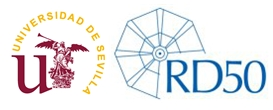Speaker
Description
The Non-Ionizing Energy Loss (NIEL) concept compares and scales the damage impacted on semiconductor devices in different radiation fields. A particular weakness of the present NIEL concept consists in the inability to predict the different formation rates of cluster and point defects in the silicon (Si) crystal for different particles and particle energies. Specifically, differences between radiation damage produced by neutrons and protons of the same displacement energies (i.e. damage parameters
normalized to the NIEL) has been observed experimentally.
In this work atomic displacements in Silicon produced by high energy particles are studied. Neutrons, protons and electrons are defined as the initial beam in Geant4, the standard EM physics list is used and the resulting Primary Knocked-on atoms (PKA) are cross-compared with FLUKA simulation and saved. The PKA are then used as an input for another Geant4 simulation with a modified physics list containing ScreenedNuclearRecoil module and the resulting Silicon Cascade is saved. The OPTICS algorithm (Ordering points to identify the clustering structure) is then presented as a method of clustering. Further approaches towards tuning of the clustering algorithm is shown and electron induced damage is being suggested as a benchmark with actual measurements.
